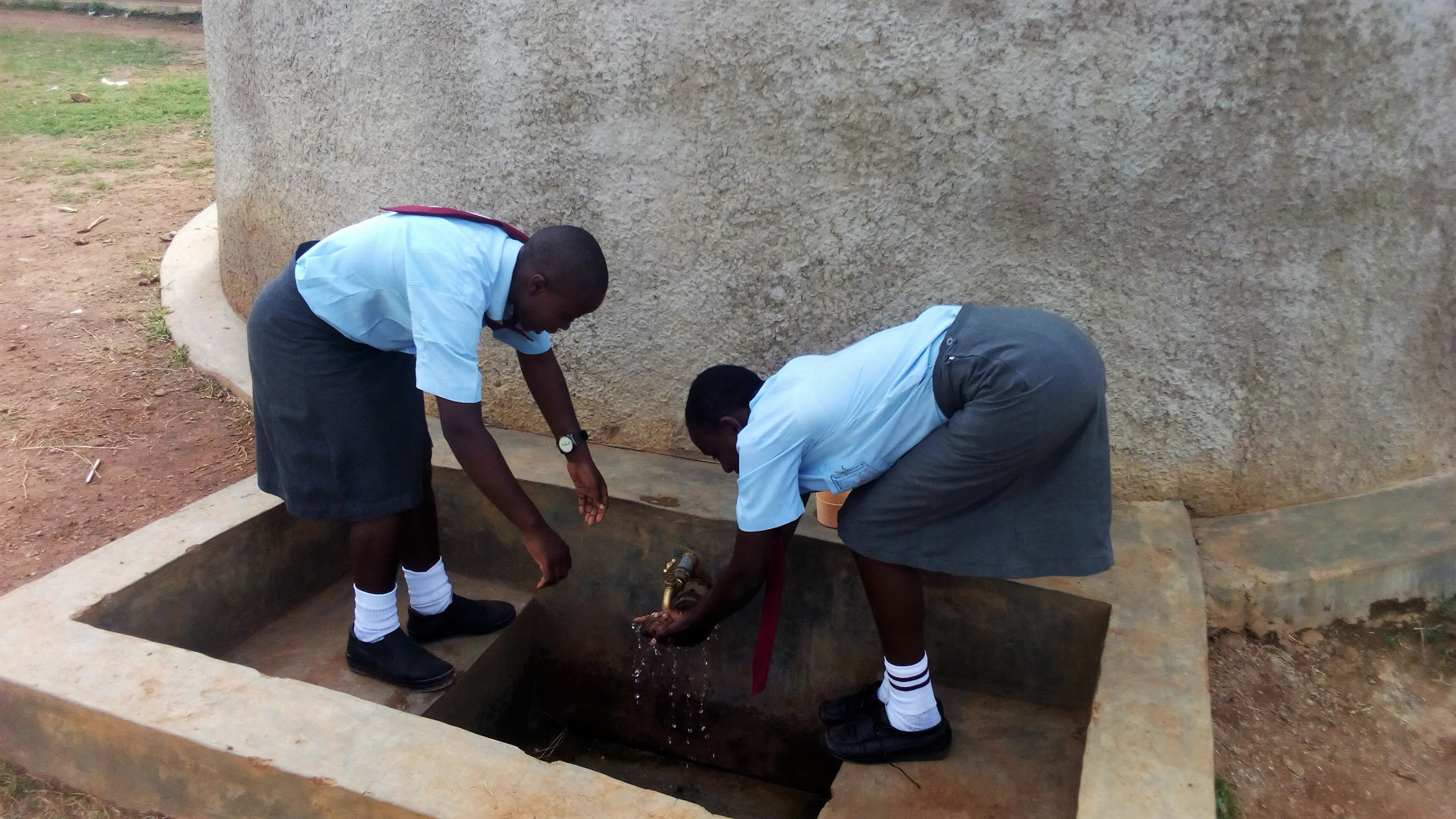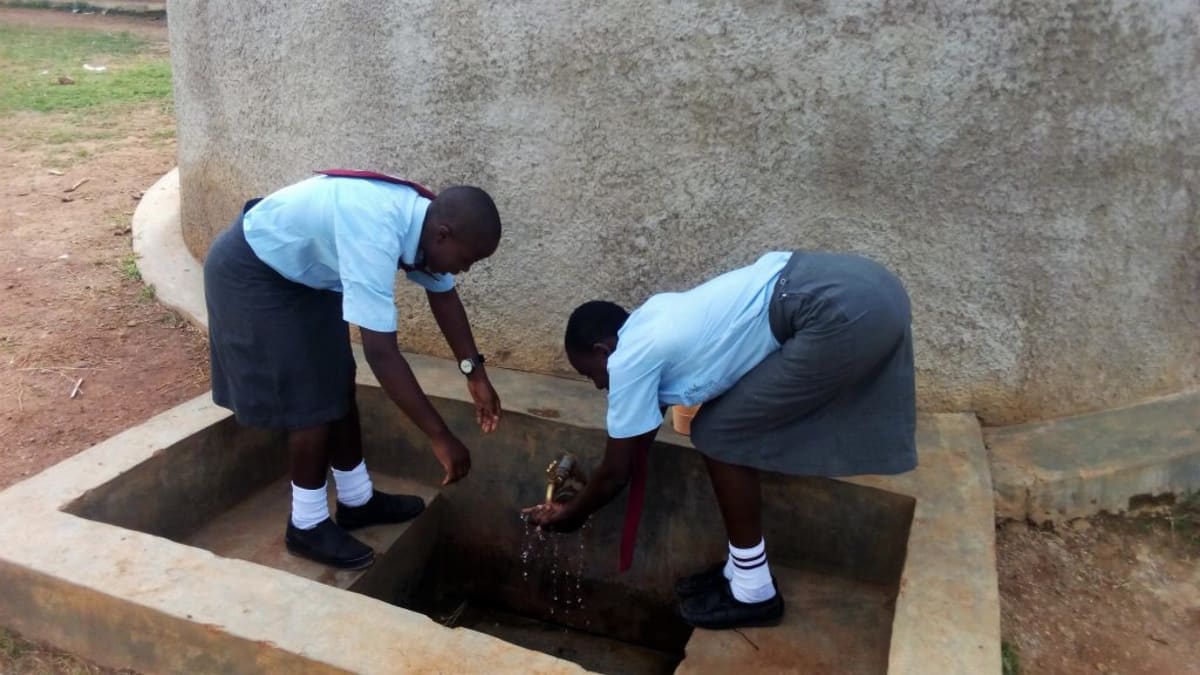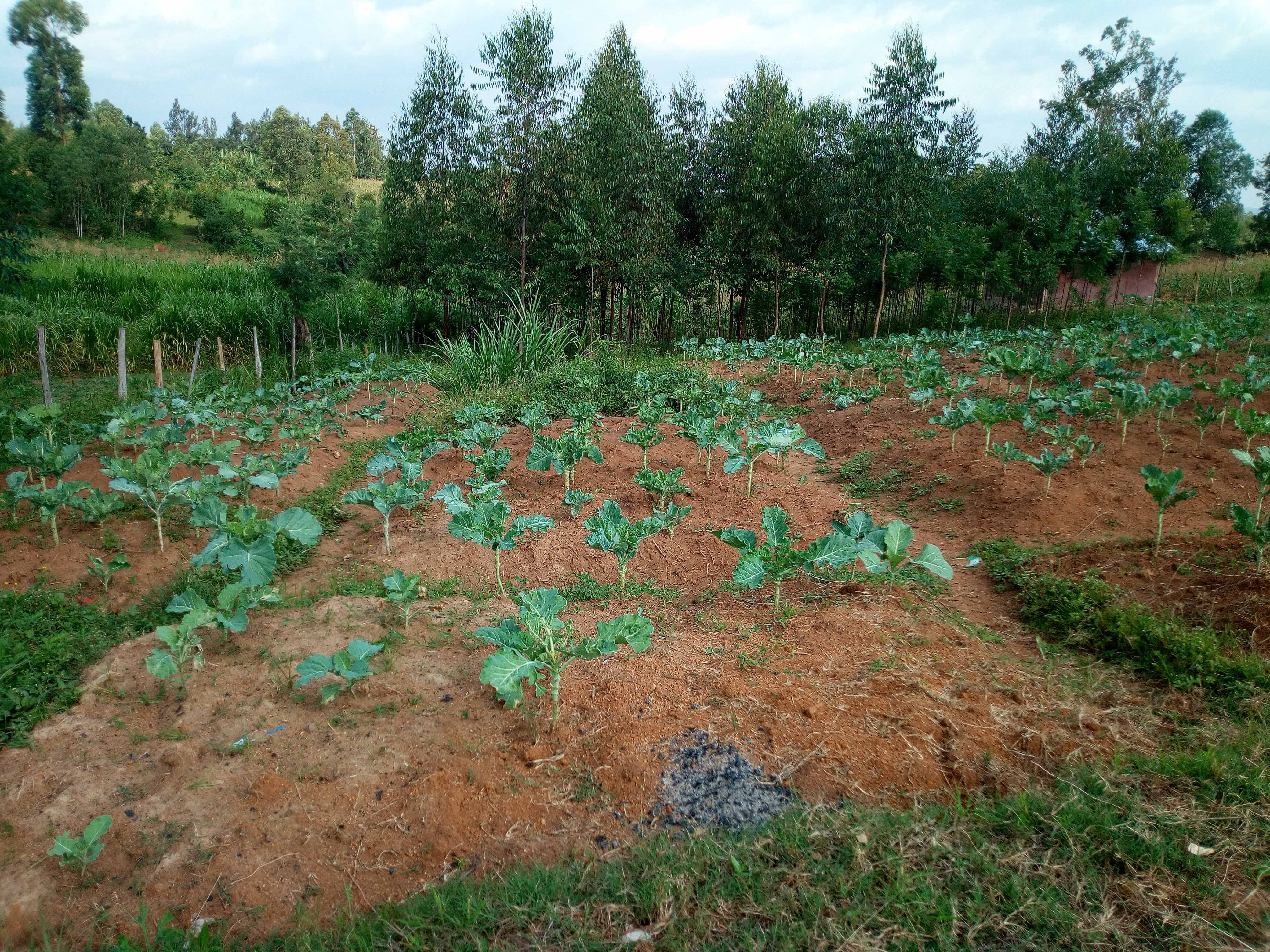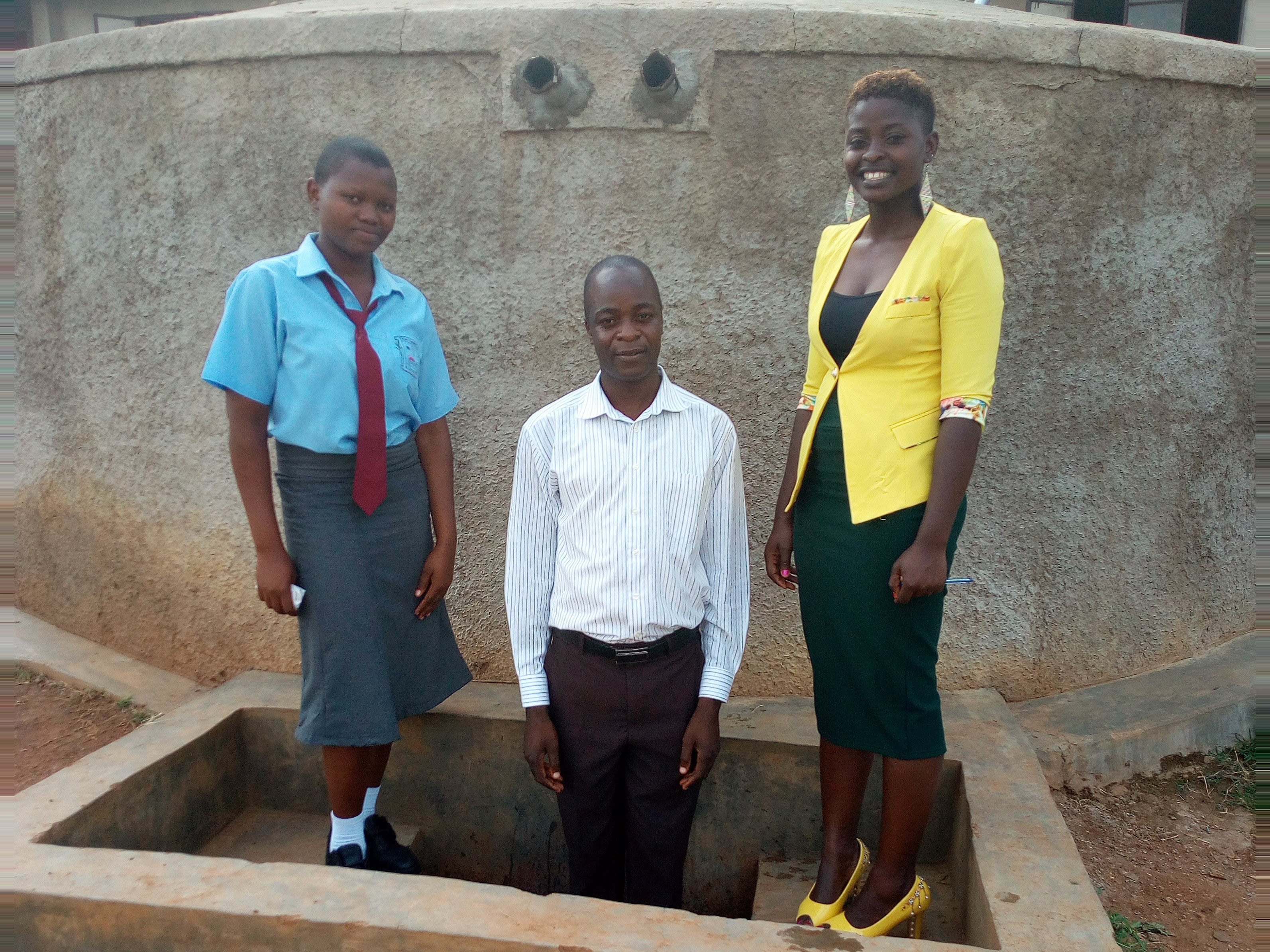This project is a part of our shared program with Western Water and Sanitation Forum (WEWASAFO). Our team is pleased to directly share the below report (edited for clarity, as needed).
Welcome to the School
The Saint Michael Emakwale Secondary School is located in Mumias East Dividion, Mumias Constituency of Kakamega County. The school has a population of 501 pupils, composed of 240 boys and 261 girls. (Editor’s Note: While this many people may have access on any given day, realistically a single water source can only support a population of 350-500 people. This site would make a great location for a second project. To learn more, click here.)
The school was started in 2012, curving off of the Emakwale Primary School already at that location. The teachers and community saw the need to offer classes beyond the primary level. The secondary school had 50 students in attendance on its opening day. Since the primary section loaned some of its classrooms to the budding secondary school, space was very limited. Emakwale Secondary School eventually bought its own land to host its facilities, students, and staff.
A normal day begins at 6:30am, as studens begin arriving for exercises and class preps. These preps begin at 7am and last for 45 minutes. Morning preps close out with a prayer and school announcements. Regular classes run from 8am to 5pm, with lunch in between.
We were introduced to this school by the Environment Minister of Kakamega County. His department assessed St. Michael Emakwale Secondary of a school in great need of improved facilities.
Water Situation
The school has no reliable, protected source of water. Students get water from a nearby unprotected spring which is also used by local households. The spring is open to contamination, since a lot of activities are carried out around it which include: washing clothes, bathing children, farming and watering animals. Students know this water source is contaminated, and fear drinking it directly.
The school has a 1000-liter container kept in the school kitchen. When students or staff fetch water, they can return to school and pour it in the container. Though many choose to boil this water before drinking, there are still cases of waterborne disease reported within the school community.
Sanitation Situation
The school currently has 10 ventilated pit latrines (VIP latrines). Four latrines are for boys, four for girls, and two for staff. These latrines are made of brick and were roofed with iron sheets. The doors are in bad condition, so are warped and can’t even close. Students, especially girls, need the privacy and dignity a working door gives!
The school does not have any hand-washing stations for students or staff to use.
Despite the difficult situations faced, the school’s attitude towards sanitation and hygiene is very positive. Each morning, cleaning is done by non-teaching staff. Though oftentimes this isn’t enough cleaning, everybody is willing to be trained on these topics to help bring about healthy changes. School board member Rober John Sumbi says that “This project will go along way in improving hygiene and sanitation in our young school that is growing very fast. We shall do all it takes to ensure that we own and support the project for its success and sustainability."
Plans: Hygiene and Sanitation Training
Students and staff will be trained over three days using Participatory Hygiene and Sanitation Training (PHAST), Community-Led Total Sanitation (CLTS), and Asset-Based Community Development (ABCD) methods. Training will include group discussions, lectures, presentations, handouts, a transect walk, and demonstrations. Training will also result in the formation of a child to child (CTC) club which will be responsible for demonstrating and promoting good hygiene and sanitation in St. Michael Emakwale Secondary School.
Plans: Rainwater Catchment Tank
A 50,000-liter rainwater catchment tank will be constructed on school grounds. Teachers, students, and parents will gather the materials needed for this project, including sand, ballast, bricks, and hardcore. This contribution will fuel a sense of responsibility for the school and community to take care of their new facilities. Once materials are mobilized, the WEWASAFO team will arrive to lead the construction effort.
Plans: VIP Latrines
Two triple-door VIP latrines will be constructed, providing three new latrines for each gender. Latrine materials will be mobilized the same way as the tank, ensuring the school feels these facilities are truly theirs.
Plans: Hand-Washing Stations
Two hand-washing stations will be delivered to the school before training. These come in the form of two 60-liter containers fitted with a tap. The training facilitator will demonstrate how to properly wash hands, and then students will have a chance to practice in groups. The child to child (CTC) club will be responsible for filling the hand-washing containers on a daily basis.
The school is in great need of water and sanitation facilities so that it can manage the growing number of students arriving from nearby communities. Since it is still a young school, this support can go a long way in enhancing student lives and improving academic performance.

 Rainwater Catchment
Rainwater Catchment
 Rehabilitation Project
Rehabilitation Project























